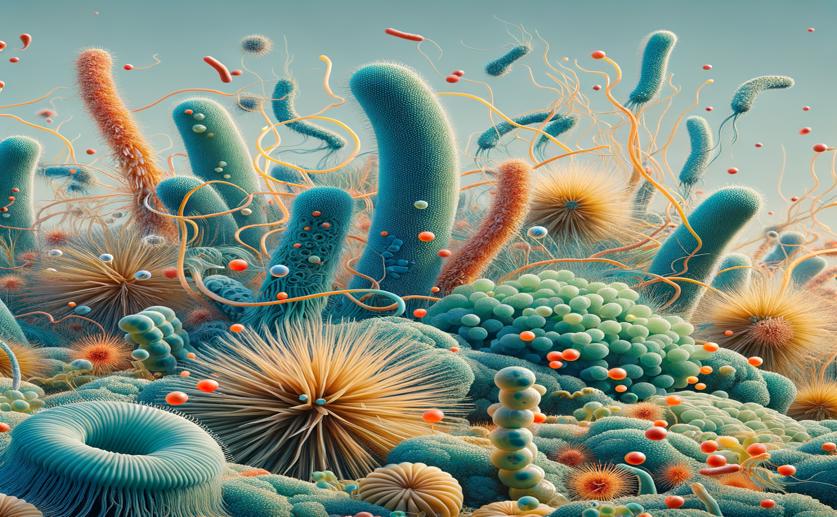
Bacterial Communities on and Inside Marine Seaweeds: Distribution and Functions
Jenn Hoskins
7th August, 2024

Image Source: Natural Science News, 2024
Key Findings
- Researchers at Alexandria University studied bacteria on ten common seaweeds along the Mediterranean Sea coast in Alexandria
- Bacteria on seaweeds showed diverse enzyme activities, helping break down complex materials
- Adding algal extracts increased bacterial populations, showing the strong relationship between bacteria and algae
References
Main Study
1) Distribution and functional perspective analysis of epiphytic and endophytic bacterial communities associated with marine seaweeds, Alexandria shores, Egypt
Published 6th August, 2024
https://doi.org/10.1186/s12866-024-03426-x
Related Studies
2) Distribution, Interaction and Functional Profiles of Epiphytic Bacterial Communities from the Rocky Intertidal Seaweeds, South Africa.
3) Organic carbon, influent microbial diversity and temperature strongly influence algal diversity and biomass in raceway ponds treating raw municipal wastewater.
4) Sediment Resuspension and Deposition on Seagrass Leaves Impedes Internal Plant Aeration and Promotes Phytotoxic H2S Intrusion.



 8th March, 2024 | Jim Crocker
8th March, 2024 | Jim Crocker